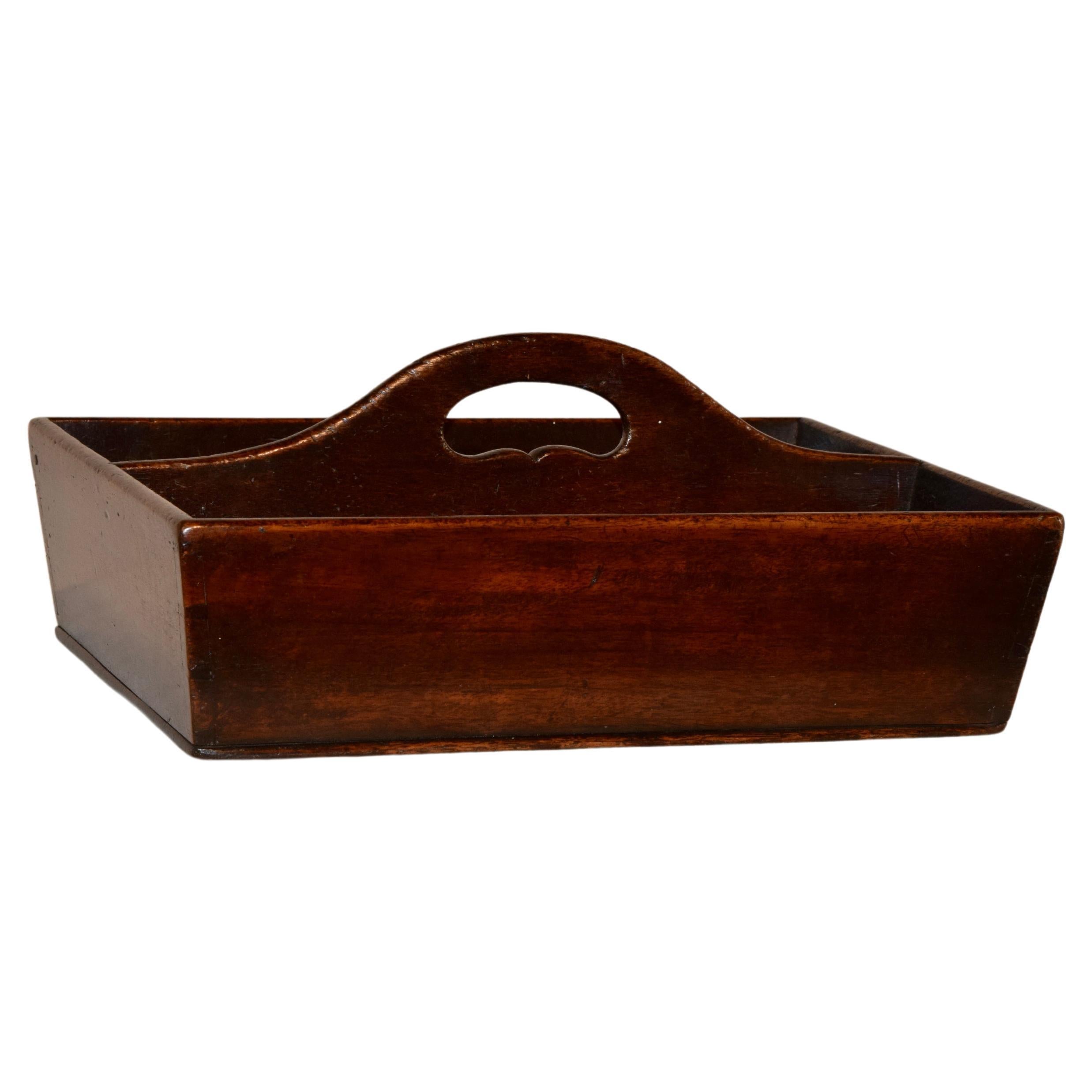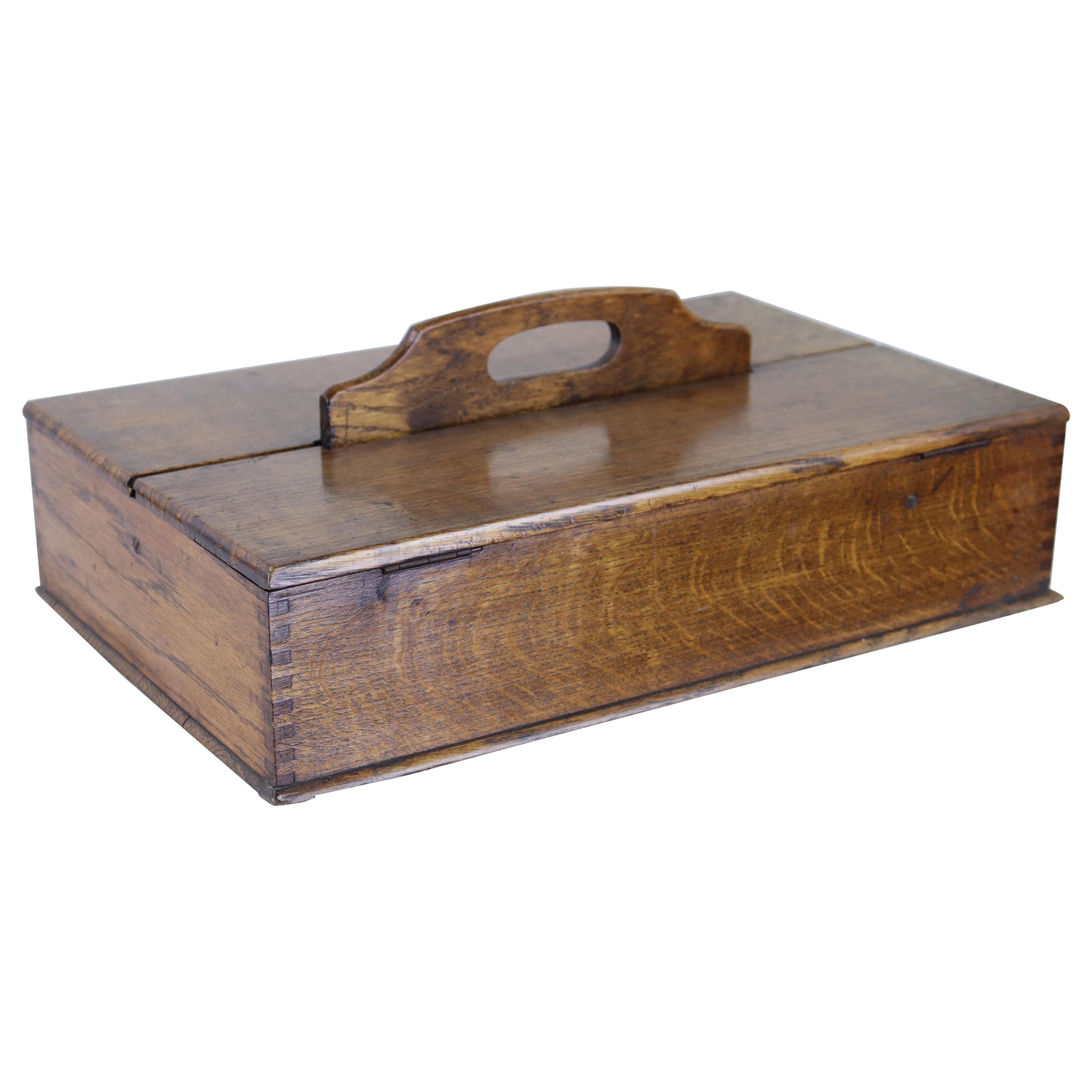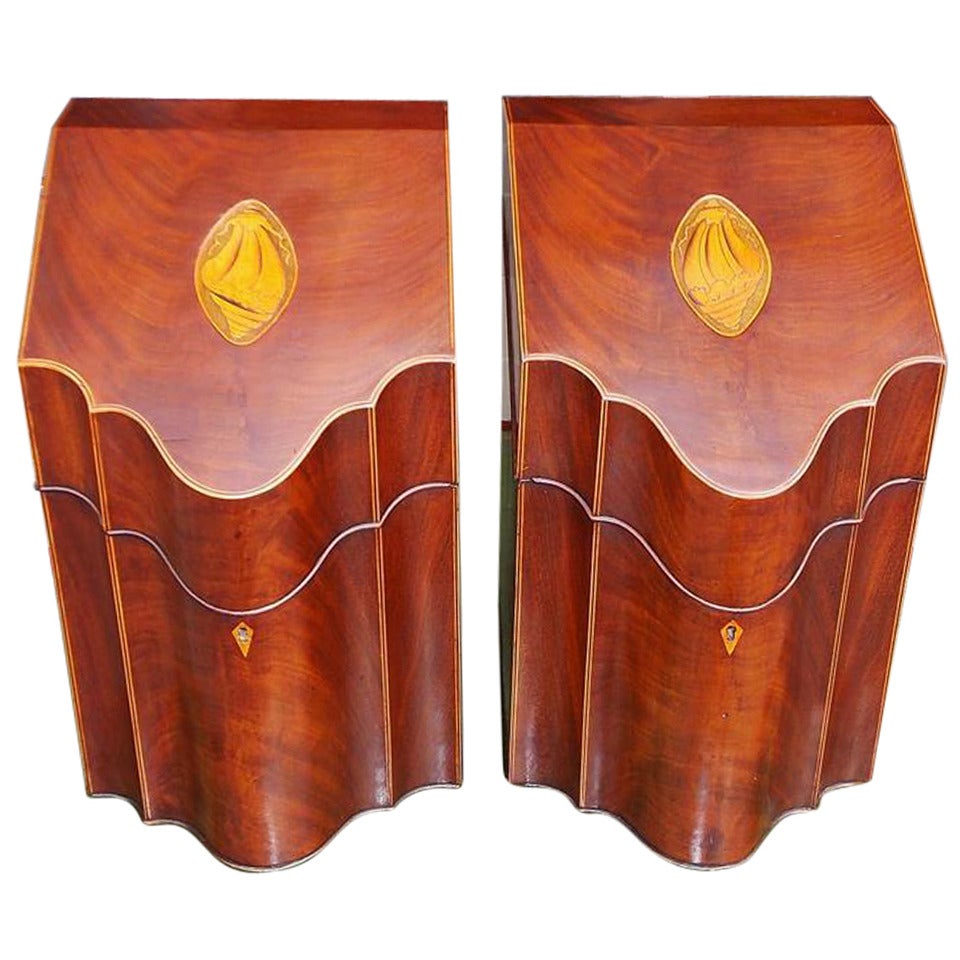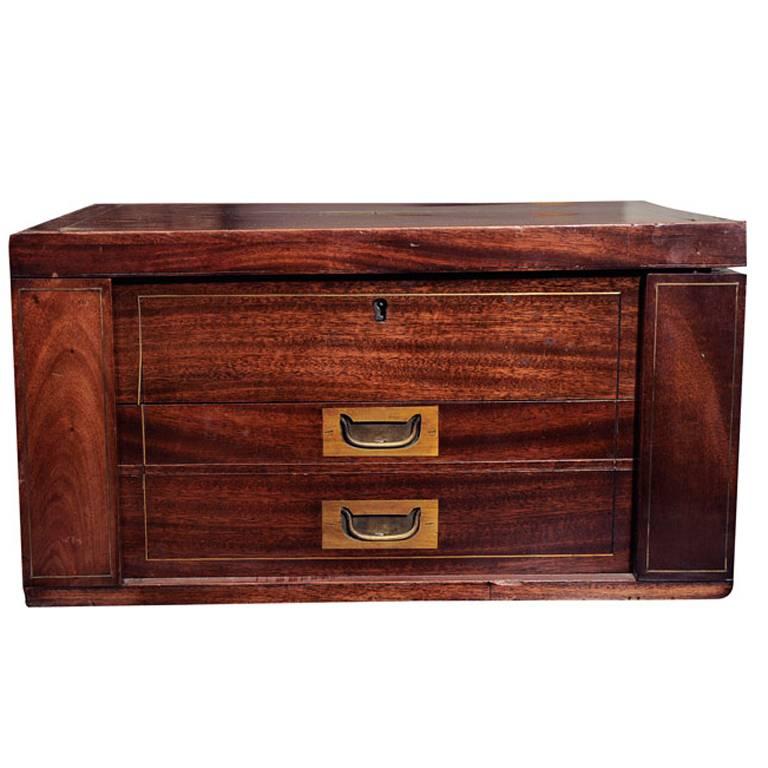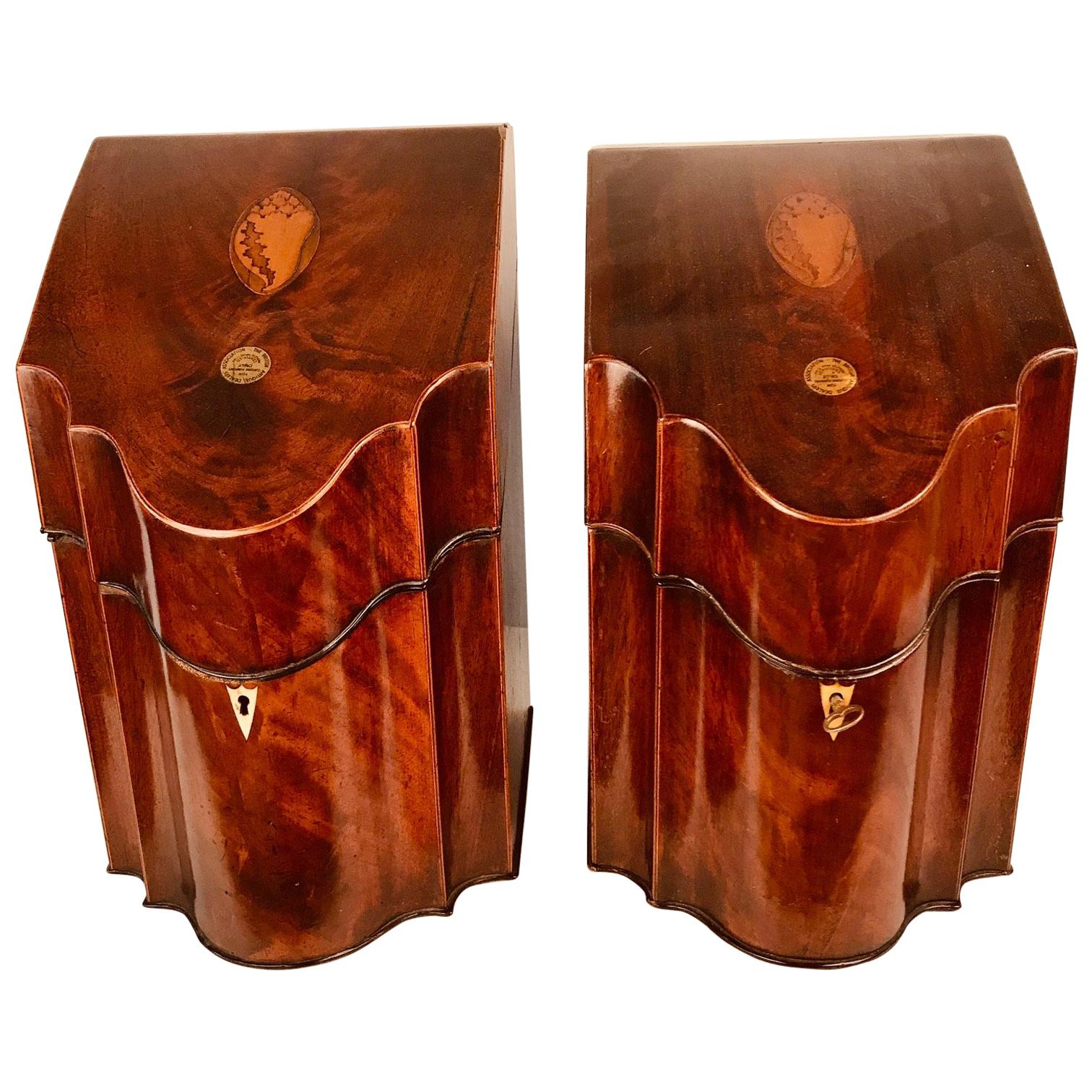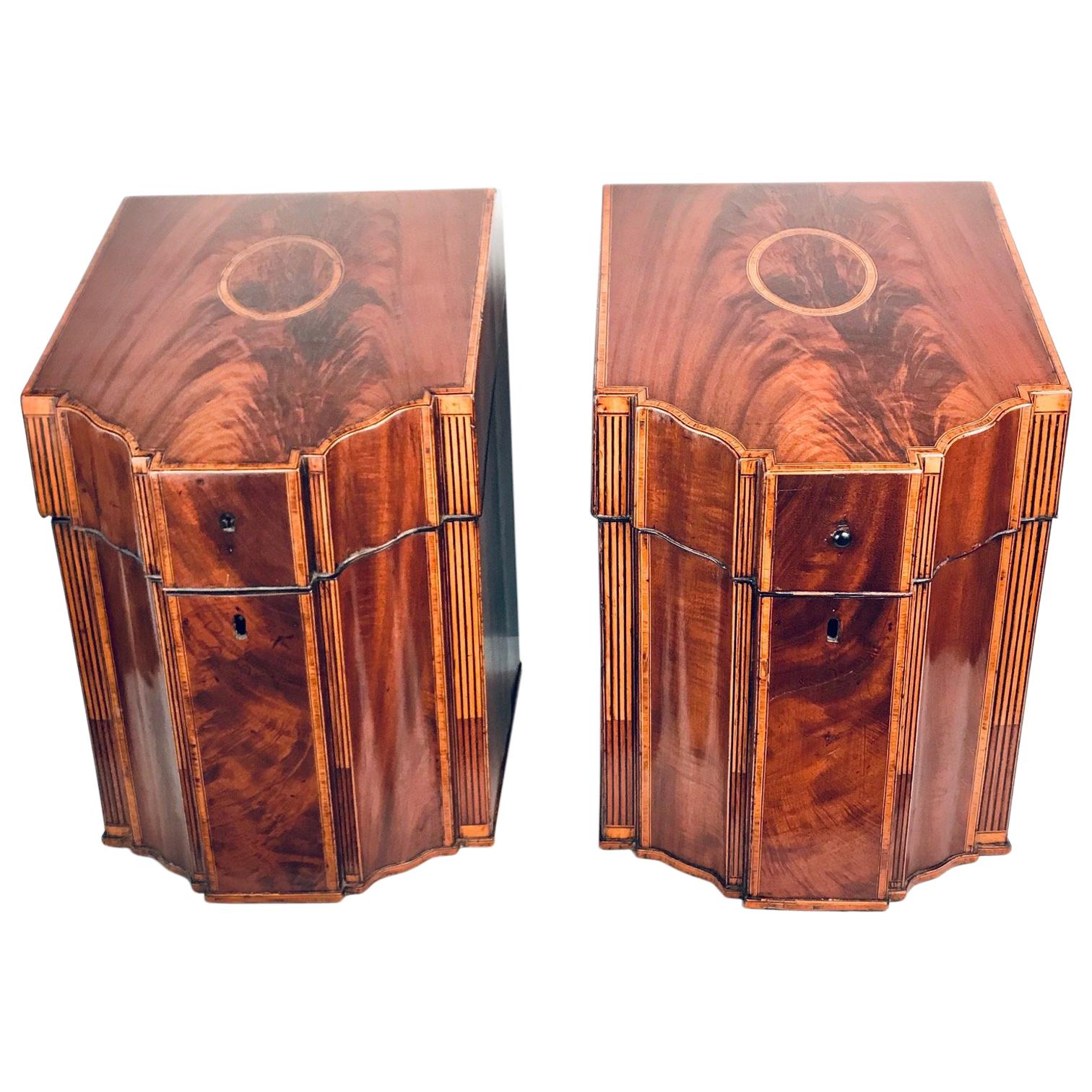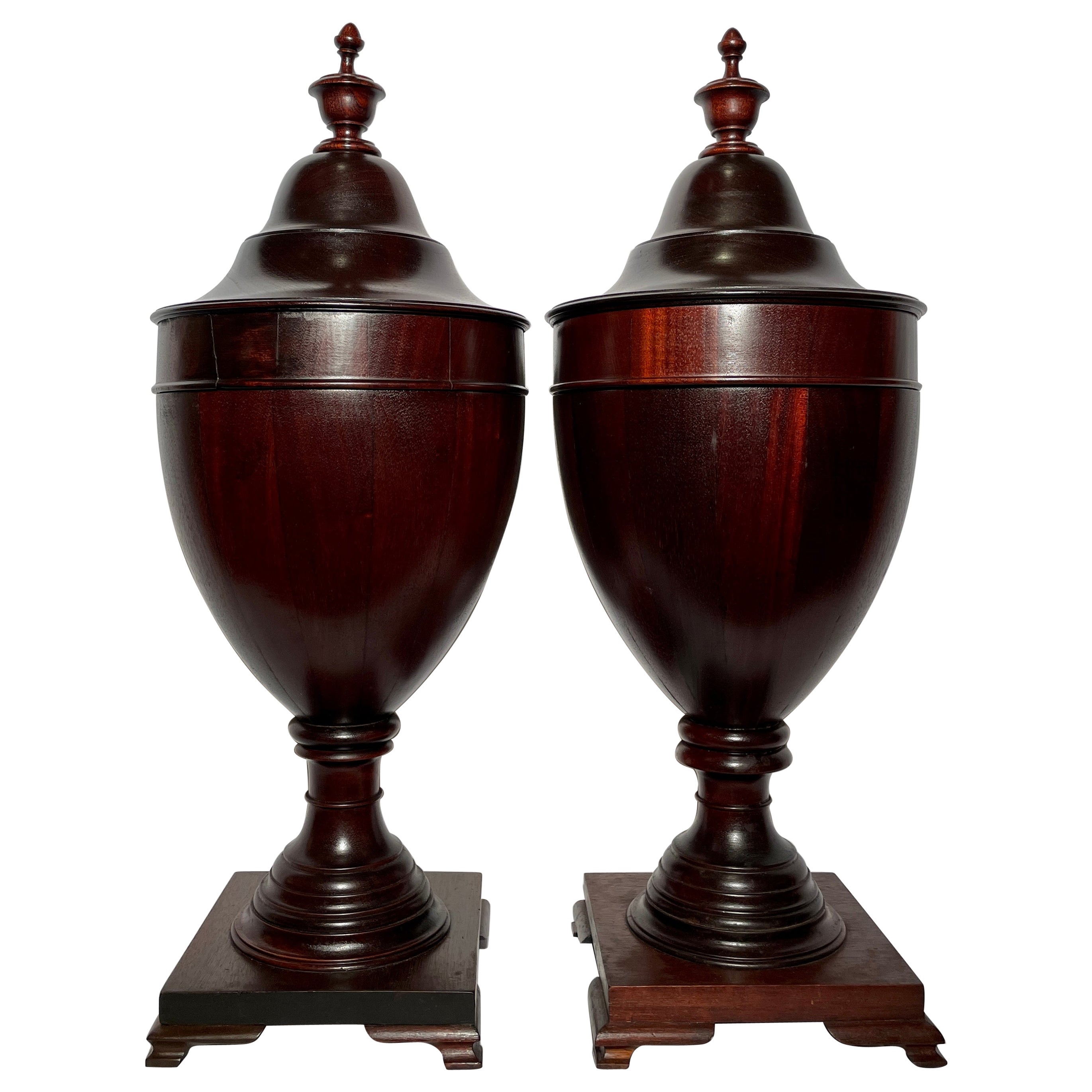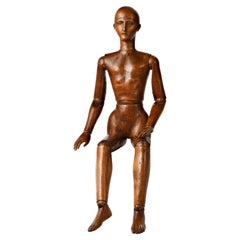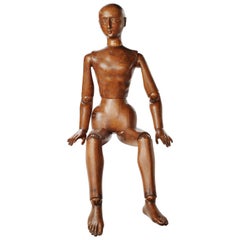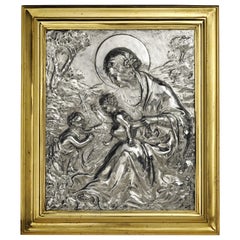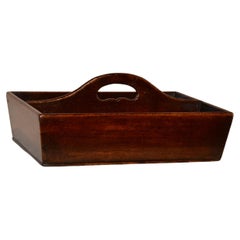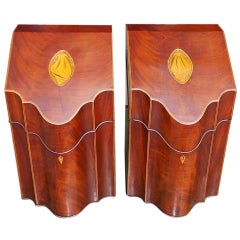
19th Century Northern Italy Wood and Leather Cutlery Box, circa 1870
View Similar Items
Video Loading
Want more images or videos?
Request additional images or videos from the seller
1 of 21
19th Century Northern Italy Wood and Leather Cutlery Box, circa 1870
About the Item
- Dimensions:Height: 11.62 in (29.5 cm)Width: 9.06 in (23 cm)Depth: 8.08 in (20.5 cm)
- Style:Other (Of the Period)
- Materials and Techniques:
- Place of Origin:
- Period:
- Date of Manufacture:circa 1870
- Condition:Minor losses. Minor fading. Some consumption of the leather in the lower part of the box. The interior has probably been altered.
- Seller Location:Milano, IT
- Reference Number:1stDibs: LU4352214925511
About the Seller
4.3
Vetted Seller
These experienced sellers undergo a comprehensive evaluation by our team of in-house experts.
Established in 1860
1stDibs seller since 2018
19 sales on 1stDibs
Typical response time: 4 hours
Associations
International Confederation of Art and Antique Dealers' Associations
More From This SellerView All
- 19th Century Italian Wood Mannequin, Circa 1870-1880Located in Milano, ITMannequin Sculpted and carved wood Italy or France, second half of the 19th century. It measures 25.59 x 6.29 x 3.54 in (65.5 x 16 x 9 cm) It weighs 2.2 lb circa (1 kg circa) St...Category
Antique 1870s Italian Other Figurative Sculptures
MaterialsWood
- Late 19th Century Italian Wood Mannequin, circa 1880Located in Milano, ITAtelier mannequin graven and carved stone pine wood Italy, late 19th century Measures: H 102 cm x 25 cm x 14 cm H 40.15 in x 9.84 in x 5.51 in Weight: circa kg 4 State of conse...Category
Antique 1880s Italian Other Figurative Sculptures
MaterialsWood
- 19th Century Italian Sterling Silver Madonna, circa 1830Located in Milano, ITEmbossed and engraved silver plaque La Madonna del lago (The Madonna of the Lake) Probably Milan, post 1824 Brass frame It measures 16.14 in x 13.85 in (41 x 35.2 cm) and it weighs 10.357 pounds (4.698 g): silver 1.31 pounds (598 g) + brass 9.03 pounds (4.100 g) State of conservation: some abrasions on the bottom. The frame is old, but not original. The plaque is made up of a sheet of embossed and engraved silver, and held in a solid brass frame. It depicts the “Madonna del lago” – “Madonna of the Lake” - (the Madonna with Child and San Giovannino) by Marco d'Oggiono (Oggiono, 1474 circa - Milan, 1524 circa), while changing only the background landscape. Almost certainly the subject reproduced in the plaque was taken from a famous engraving by Giuseppe Longhi (Monza, 1766 - Milan, 1831), one of the greatest engravers of his era. The silver is unmarked, probably because originally the Madonna was due to be exposed in a church: sometimes precious metals destined for worship and liturgical use would be exempted from payment and were, therefore, not marked. It is very likely that the plaque was made in Milan because in this city in 1824 the engraving by Giuseppe Longhi was made and printed. In addition, in Milan, the alleged lost painting by Leonardo da Vinci in his Milanese period (1482-1500) would be produced; this is the painting from which Marco d'Oggiono took his version. The painting Marco d?Oggiono was one of Leonardo da Vinci's most brilliant students and collaborators (D. Sedini, Marco d’Oggiono, tradizione e rinnovamento in Lombardia tra Quattrocento e Cinquecento, Roma 1989, pp. 151-153, n. 56; p. 225, n. 124, with previous bibliography). His style reflects in every way that of the Tuscan Maestro, so much so that he was the one who executed some copies of da Vinci's paintings. The execution of the “Madonna del Lago” probably draws inspiration from a lost painting by the Maestro, created while he was living in Milan (1482-1500). There are many similarities with other works by Leonardo such as the “Vergine delle rocce” or the “Vergine con il Bambino e San Giovannino, Sant’Anna e l’Agnello”. The painting, from which the drawing and then the famous engraving were taken, is found today at the M&G Museum of Bob Jones University in Greenville, South Carolina, where it came to rest after the sale of the Harrington Collection in London in 1917. The work appears in the inventories of the collection of Napoleon and Joséphine Bonaparte at the castle of Malmaison, before 1809. The Malmaison building was born and developed in the 17th and 18th centuries. In the 18th century it belonged to Jacques-Jean Le Coulteux du Molay, a wealthy banker. Later, during the Directory, Joséphine Bonaparte de Beauharnais bought it on April 21st, 1799, but settled at the castle definitively only after her husband separated from her in 1809. She remained there until 1814, the year of her death. When Joséphine died, the estate passed to her son Eugène de Beauharnais, who moved to Munich with his whole family in 1815, bringing with him the collection of paintings he inherited from his mother. Eugène died in 1824 and his wife Augusta of Bavaria (von Bayern), unable to keep it, in 1828 sold the Malmaison to the Swedish banker Jonas-Philip Hagerman. It is likely that in this period Augusta also sold part of the paintings inherited from her husband, including the “Madonna del Lago”. This painting then came into the possession of Leicester Stanhope, fifth Earl of Harrington (1784 - 1862) and then was passed down to his descendants. In 1917, at the death of Charles, eighth Earl of Harrington, his brother Dudley inherited the title and properties and he put up a part of his collections for sale. Among these, precisely, the painting by Marco d'Oggiono was to be found. On the occasion of that auction the painting was presented as a work by Cesare da Sesto, by virtue of a handwritten note by the Countess of Harrington on the back of the table. However, already in 1857, the German critic Gustav Waagen had identified Marco d'Oggiono as the author of the painting, then exhibited in the dining room of Harrington House in London (Treasures of Art in Great Britain, in 4 volumes, London, 1854 and 1857). The engraving Giuseppe Longhi was one of the most renowned engravers in Italy between the end of the 18th century and the first quarter of the 19th century. In 1824 Giuseppe Longhi, based on a design by Paolo Caronni, made a famous engraving of the painting of Marco d?Oggiono. The activity of Longhi was then at the peak of his notoriety, enough to earn him very substantial commissions; it is not risky to suppose that some of his successful engravings were also reproduced using other means: in our case in silver. (A. Crespi, a cura di, Giuseppe Longhi 1766–1831 e Raffaello Morghen...Category
Antique 1820s Italian Neoclassical Sterling Silver
MaterialsSterling Silver, Brass
- Seven Early 19th Century Neoclassical Italian Chairs, Milan circa 1820Located in Milano, ITGroup of seven chairs Milan, first quarter of the 19th century Carved walnut wood, lacquered in gray green and cream and partially gilded They measure: height 36.61 in (18.11 in ...Category
Antique 1810s Italian Neoclassical Chairs
MaterialsWalnut
- 19th Century Italian Sterling Silver Glass and Wine Coasters, circa 1830By Antonio MantelliLocated in Milano, ITTwelve silver glass coasters and four silver wine coasters. Silversmith Antonio Mantelli Milan, circa 1830 They measure: Glass coasters: 0.78 in high x 3.46 in diameter (2 cm x 8.8 c...Category
Antique 1820s Italian Neoclassical Sterling Silver
MaterialsSterling Silver
- 19th Century Pair of French or Russian Gilt Bronze Candelabra, circa 1830Located in Milano, ITPair of thirteen-flame candelabra France or Russia Second quarter of 19th century Cast, chiseled and gilt bronze Height 40.95 in (cm 104), diameter 17,7 in (cm 45) 97 lb (44 kg) Sta...Category
Antique 1830s French Neoclassical Candelabras
MaterialsOrmolu
You May Also Like
- 19th Century Cutlery CaddyLocated in High Point, NCLate 18th century English cutlery caddy made from mahogany. The simplicity of this caddy is elegant and timeless. It has a sloping handle with a cutout f...Category
Antique 18th Century English Georgian Decorative Boxes
MaterialsMahogany
- Antique Oak Cutlery BoxLocated in Port Chester, NYAn antique cutlery box with wonderful dovetailed exterior corners in very good antique condition. The patina and color of the Golden oak is lovely. Would...Category
Antique Mid-19th Century English Knife Boxes
MaterialsOak
- Pair of English Mahogany Serpentine Inlaid Cutlery Boxes. Circa 1790Located in Hollywood, SCPair of English mahogany serpentine inlaid slant top cutlery boxes with exterior Satinwood inlaid conch shells, satinwood and ebony inlaid interior stars, with original slotted fitt...Category
Antique 18th Century and Earlier British George III Knife Boxes
- French Maison Gellée et Gainier Leather and Brass over Wood Decorative BoxLocated in Atlanta, GAA French wooden decorative box from the 19th century from the Maison 'Gellée Gainier' à la Boule d'Or, Paris, leather bound with brass braces, presenting a compartmented interior and...Category
Antique 19th Century French Decorative Boxes
MaterialsBrass
- Pair Antique 19th Century English Mahogany Cutlery Urns / Knife Boxes Circa 1890Located in New Orleans, LAPair antique 19th century English mahogany cutlery urns / knife boxes, Circa 1890.Category
Antique 19th Century English Knife Boxes
MaterialsMahogany
- 19th Century Walnut Cutlery BoxLocated in Los Angeles, CAThis finely handmade 19th century walnut cutlery box is in fine condition and retains a nice mellow patina. Great for so many different uses. Super cool for outgoing mail or bills! N...Category
Antique 19th Century American Adirondack Decorative Boxes
MaterialsWood
$365 Sale Price38% Off
